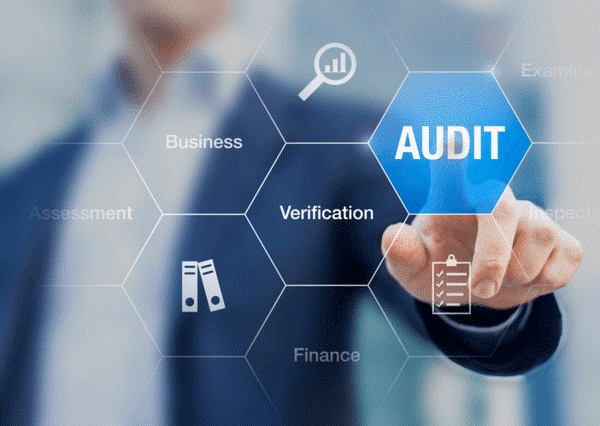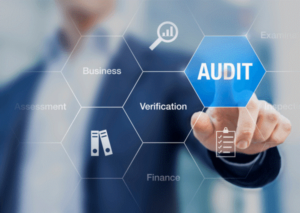Numerous organizations see the necessary cycle for Internal Audit as a type of necessary evil that they need to suffer to keep up ISO 9001 certification. In the best-case scenario, they think it is a copy exertion of the enlistment center, not understanding that the Internal Audit can be significantly more compelling on the grounds that it takes a gander at the cycles more regularly and more altogether than the recorder possesses energy for. To say the least, the Internal Auditors are viewed as a type of interior police power that it is ideal to secure yourself against by concealing basic information or inside and out misdirecting with bogus data.
Steps In The Internal Audit
Indeed, as a cycle proprietor, the ISO 9001 Internal Audit cycle can be the ideal approach to have an external arrangement of eyes investigate your process. They can help recognize regions for development or potentially carelessness, which can help your cycle run better, quicker, or more proficiently. The following are five principle steps that disclose how to direct an internal review as indicated by ISO 9001 and how they can best be utilized to zero in the inward cycle proprietors on the progress of those cycles.
1) Planning the Audit Schedule
A vital piece of a decent cycle has a general Audit Schedule that is promptly accessible to tell everybody when each process will be evaluated over the forthcoming cycle (usually a yearly timetable). If you were not to have an arrangement and went with shock reviews, the message given from senior administration is “We don’t confide in our representatives.” By distributing the review goals, the news is that this is implied as a help to the cycle proprietors and the inspectors are there to help. This can permit the cycle proprietors to time the completion of any improvement projects that they are dealing with before the review, so they can assemble essential data on the execution or demand the evaluators to zero in on assisting with social affairs data for other arranged upgrades.
2) Planning the Process Audit
The initial phase in arranging the individual cycle reviews is to affirm with the cycle proprietors when the review will occur. The general arrangement above is, to a greater degree, a rule with regards to how frequently cycles will be examined and generally when. The affirmation permits the examiner and cycle proprietor to decide the best and ideal opportunity to survey the process. This is the point at which the evaluator can explore past reviews to check whether any follow-up is needed on remarks or concerns recently found. When the cycle proprietor can distinguish any zones, the reviewer can take a gander to help the cycle proprietor recognize data. A decent review plan can ensure that the cycle proprietor will get an incentive out of the review cycle.
3) Conducting the Audit
A review should gather the cycle proprietor to ensure that the review plan is finished and prepared. At that point, there are numerous roads for the evaluator to accumulate data during the review: assessing records, conversing with workers, breaking down crucial cycle information, or in any event, noticing the cycle in real life. This movement’s focal point is to accumulate proof that the cycle is working as arranged in the QMS and is influential in delivering the necessary outcomes. Perhaps the most important things that an examiner can accomplish for a cycle proprietor isn’t just to recognize regions that don’t have proof that they are working appropriately, yet, in addition, to call attention to zones of a cycle that may work better if changes are made.
4) Reporting on the Audit
An end meeting with the cycle proprietor is a need to guarantee that the progression of data isn’t deferred. The cycle proprietor will need to know whether there are any regions of shortcoming that should be tended to; however, they will likewise be keen on knowing whether any territories exist that may be improved. This ought to be followed with a put-down account at the earliest opportunity to give the data in a more lasting arrangement to empower follow-up of the data. By recognizing the non-adjusting zones of the cycle and the positive territories and potential improvement zones, the cycle proprietor will improve an incentive from the Internal Audit, which will take into account measure enhancements.
5) Follow-up on Issues or Improvements Found
Similarly, as with numerous territories of the norm, follow-up is a basic advance. On the off chance that issues have been found and stimulating activities taken, ensuring that the problem is fixed is a critical piece of fixing it. In the event that improvement projects have been finished from favorable circumstances distinguished in the review, at that point, perceiving how much the cycle has improved is an incredible inspiration for future upgrades.
Zero in on cycle improvement to take advantage of an Internal Audit By utilizing the Internal Audit cycle to zero in on improving the processes and not merely looking after consistency, the organization can see more of the reviews incentive. Cycle improvement is one of the critical components of an ISO 9001 Quality Management System. It ought to be one of the fundamental helpers of an organization that needs to execute and keep a decent QMS. Cycle improvement assists with productivity yet set aside time and cash all the while. Whenever utilized appropriately, the Internal Audit, rather than being an “important insidiousness,” can be probably the most generous giver toward measure improvement in the QMS.







